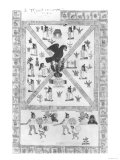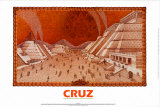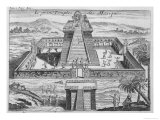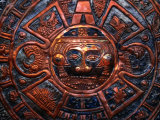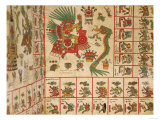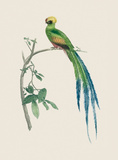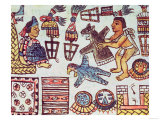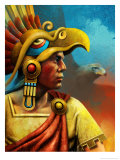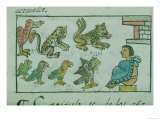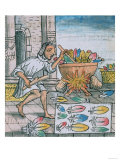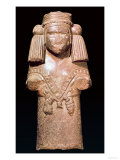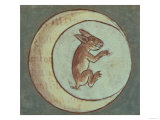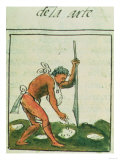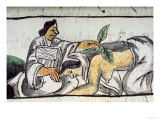|
|
Aztec and Aztec Culture Posters, Prints & Charts
for social studies classrooms, home schoolers, themed decor for office and studio.
|
Native Americans > notable Native Americans > AZTEC & AZTEC CULTURE | Aztec Map < social studies
|
|
The Aztec, who called themselves Mexicas, were a pre-Colombian (referring to eras preceeding the arrival of Christopher Columbus in the New World) people indigenous to central Mexico.
Their culture was similar to other Mesoamerican (roughly an area from central Mexico to Costa Rica) groups such as the Olmec, Teotihuacan and Mayas.
These Mesoamerican cultures evolved into complex agricultural and technologically advanced societies who built expansive cities and religious monuments as opposed to the peoples of northern Mexico (Aridoamerica) where climate and terrain forced a nomadic lifestyle.
|
|
|
Tenochtitlan was the capital of the Aztec Empire which was made up of the 1428 Triple Alliance of the Itzcoatl, Nezahualcoyotl and Tlacopán.
Tenochtitlan was founded on a small swampy island in Lake Texcoco in 1325. The location was chosen when the Mexicas saw an eagle perched on a prickly pear cactus with a snake clutched in its talons - it was the fulfillment of a prophecy of where they were to build their new home.
Mexico City, the capital of Mexico, is built over the ruins of Tenochtitlan.
|
|
|
|
|
|
|
A “teocalli” is a Mesoamerican stepped pyramid topped by a temple where important religious rituals took place. Huitzilopochtli, a war and sun god, was the patron of Tenochtitlan. Huitxilopochtli means “Hummingbird of the South.”
• more pyramid posters
|
|
|
|
The Aztec sun calendar represents a 365 solar day cycle with a 260 ritual day almanac called a “tonalamatl” that was used for divination by the priests. The Aztec Cosmos calendar show the twenty day signs arrayed around a central face.
Together the solar and ritual cycles form a 52 year “century”, or Calendar Round. The days are named by a combination of twenty pictorial signs with the numbers 1-13.
• mandala posters
|
|
|
|
|
|
|
Quetzalcoatl means “long-green feather” and is the name of Plumed Serpent deity from which many Mesoamerican cultures claim descent. The Resplendent Quetzal bird is the source of the precious long green feathers for ritual use.
• more theology posters
• more birds posters
|
|
|
|
Montezuma II
b. c. 1466
d. 1520
Montezuma II (Moctezuma) was the ruler of the Aztec Empire, at the beginning of the Spanish conquest of Mexico. He was both a “host” to the Spanish, and their hostage. When he was no longer useful to the Spanish in controlling the displeasure of his subjects to the Spanish presence and demands, the Spanish let the people dispose of their “ruler”. Montezuma was succeeded by his brother Cuitláhuac, and then by Cuauhtémoc, his nephew.
|
|
|
|
Cuauhtemoc
b. c 1502
d. 2-28-1525
Cuauhtemoc the last Aztec ruller, and nephew of Montezuma. He was tortured by the Spanish in the belief he could reveal the location of the supposed Aztec gold and finally executed by Hernan Cortes for conspiring to uprise against the Spanish invaders. It is thought the Spanish mistook Aztec gold clad wood carvings to be solid gold, and thus were disappointed with the recovered gold and deluded into believing more gold had to be hidden somewhere.
|
|
|
|
|
|
|
|
|
|
|
|
|
|
previous page | top
Native Americans > notable Native Americans > AZTEC & AZTEC CULTURE | Aztec Map < social studies
|
|
I have searched the web for visual, text, and manipulative curriculum support materials - teaching posters, art prints, maps, charts, calendars, books and educational toys featuring famous people, places and events - to help teachers optimize their valuable time and budget.
Browsing the subject areas at NetPosterWorks.com is a learning experience where educators can plan context rich environments while comparing prices, special discounts, framing options and shipping from educational resources.
Thank you for starting your search for inspirational, motivational, and educational posters and learning materials at NetPosterWorks.com. If you need help please contact us.
|
|
|
|







